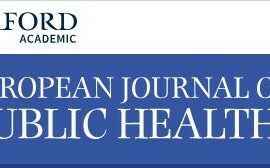
Ogbu, T.J., Scales, S.E., de Almeida, M.M. et al. (2022) Arch Public Health 80, 160.
Abstract
Background
Quantifying the effect of measles containing vaccine (MCV) coverage and the prevalence of global acute malnutrition (GAM) on mortality levels in populations of displaced and crisis-affected resident children is important for intervention programming in humanitarian emergencies.
Methods
A total of 1597 surveys containing data on under-five death rate, population status (internally displaced, refugee, or crisis-affected resident), measles containing vaccine coverage, and global acute malnutrition were extracted from the Complex Emergency Database (CE-DAT). Under-five mortality rates were dichotomized to those exceeding critical levels or otherwise. A Bayesian multivariable mixed-effect logistic regression model was used to assess the association between an under-five death rate (U5DR) exceeding this threshold and population status (i.e., internally displaced, refugees or residents), GAM prevalence (proxy for food security), and MCV coverage.
Results
The prevalence of GAM, MCV and U5DR were higher in internally displaced children (IDC) with values of 14.6%, 69.9% and 2.07 deaths per 10 000 per day, respectively. Refugee populations had lower average under-five mortality rate (0.89 deaths per 10 000 per day), GAM of 12.0% and the highest measles containing vaccine coverage (80.0%). In crisis-affected residents the prevalence of GAM, MCV and average U5DR are 11.1%, 65.5% and 1.20 deaths per 10 000 per day respectively. In mixed-effect logistic model taking 2 deaths per 10 000 children less than five years old per as emergency threshold (Model III); MCV (AOR = 0.66, 95% Highest Density Interval (HDI): 0.57, 0.78), GAM (AOR = 1.79, 95% HDI: 1.52, 2.12) were associated with a reduction of the odds of U5DR exceeding critical level accounting for country-specific levels of variability. The odds of U5DR exceeding critical level (2/10000/day) in crisis-affected resident children and refugees were 0.36 (95% HDI: 0.22, 0.58) and 0.25(95% HDI: 0.11, 0.55) less than amongst IDP children adjusting for GAM and MCV. In considering country specific yearly median U5DR (model IV) the odds of U5DR exceeding twice the median U5DR were associated with MCV (AOR = 0.72, 95% HDI: 0.64, 0.82), GAM (AOR = 1.53, 95%HDI: 1.34, 1.76). The odds of U5DR exceeding critical level in crisis-affected resident children was 0.30(95% HDI: 0.20, 0.45) less than IDP children, after adjusting for MCV and GAM. We found no difference between the odds of U5DR exceeding twice the country level median U5DR in the refugee population compared to the IDPs.
Conclusions
In this study vaccination coverage and global acute malnutrition (proxy for food security) were associated with U5DR exceeding critical level. The emergency threshold for IDPs and affected residents is significantly different and consistent across the different outcomes, whereas the result is inconsistent for IDPs and refugees. Continued improvement in measles vaccination coverage and reduction of malnutrition in humanitarian emergencies have the potential to minimize the deterioration of mortality level amongst children in emergency settings. To generate a robust understanding of the critical level of child mortality in displaced and affected resident populations, studies accounting for the impact of the duration of displacement, contextual factors in humanitarian settings, and the level of humanitarian assistance provided are needed.



